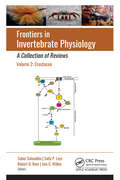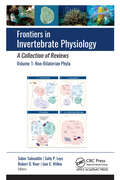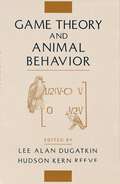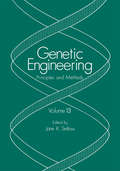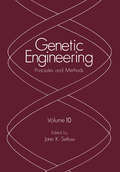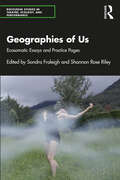- Table View
- List View
Fox (Large Print)
This image shows a fox from the side, but turned slightly towards you, so both its eyes and ears can be found. There is a locator dot shown, which will be at the top left of the page when the image is the right way up. Its head is on the right of the page and tail on the left. The fox has two pointed ears; the one on the right is turned away from you, the ear on the left is facing you, so the inside of the ear can be found. Directly down from the ears are the fox's eyes, and down again a white patch of fur underneath its chin, pointed muzzle and its nose. To the left of its head is the fox's neck and body. The fox is standing on four legs. Its big bushy tail is on the left of the page and ends in a fluffy white tip.
Fox (UEB Contracted)
This image shows a fox from the side, but turned slightly towards you, so both its eyes and ears can be found. There is a locator dot shown, which will be at the top left of the page when the image is the right way up. Its head is on the right of the page and tail on the left. The fox has two pointed ears; the one on the right is turned away from you, the ear on the left is facing you, so the inside of the ear can be found. Directly down from the ears are the fox's eyes, and down again a white patch of fur underneath its chin, pointed muzzle and its nose. To the left of its head is the fox's neck and body. The fox is standing on four legs. Its big bushy tail is on the left of the page and ends in a fluffy white tip.
Fox (UEB uncontracted)
This image shows a fox from the side, but turned slightly towards you, so both its eyes and ears can be found. There is a locator dot shown, which will be at the top left of the page when the image is the right way up. Its head is on the right of the page and tail on the left. The fox has two pointed ears; the one on the right is turned away from you, the ear on the left is facing you, so the inside of the ear can be found. Directly down from the ears are the fox's eyes, and down again a white patch of fur underneath its chin, pointed muzzle and its nose. To the left of its head is the fox's neck and body. The fox is standing on four legs. Its big bushy tail is on the left of the page and ends in a fluffy white tip.
Frontiers in Invertebrate Physiology: Volume 2: Crustacea
This new 3-volume set provides informative reviews on the physiology of sponges, cnidarians, round and flat worms, annelids, echinoderms, and crustaceans, advancing our knowledge of the physiology of these major invertebrate groups (Phyla). Invertebrates exhibit the largest number of species and occupy virtually every conceivable ecological niche. They are economically important in food chains, they recycle organic waste, and they are crucial pollinators of plants and sources of food. They are also medically relevant as parasites that cause major diseases of both humans and livestock. Chapters on crustacean physiology are grouped in this volume and cover diverse physiological topics ranging from moulting, respiration, water balance, biomineralization, bioreceptors, and temperature regulation to the land adaptation of terrestrial crustaceans. The chapters are comprehensive and add new knowledge to crustacean biology. Volume 1 looks at non-bilaterians (sponges, cnidarians, placozoans) while echinoderms and annelids are covered in Volume 3.
Frontiers in Invertebrate Physiology: Volume 1: Non-Bilaterian Phyla
This new 3-volume set provides informative reviews on the physiology of sponges, cnidarians, round and flat worms, annelids, echinoderms, and crustaceans, advancing our knowledge of the physiology of these major invertebrate groups (Phyla). Invertebrates exhibit the largest number of species and occupy virtually every conceivable ecological niche. They are economically important in food chains, they recycle organic waste, and they are crucial pollinators of plants and sources of food. They are also medically relevant as parasites that cause major diseases in both humans and livestock. Volume 1 looks at non-Bilaterians (sponges, cnidarians, placozoans). The focus on sponge biology has recently been on symbiosis, nutrient uptake, and sensory biology. The section on cnidarians covers biomineralization, the nervous system, and development. The biology of placozoans is described in depth, including the role of neuropeptides in feeding. Volume 2 and covers crustacean physiology and diverse physiological topics, ranging from molting, respiration, water balance, biomineralization, bioreceptors, and temperature regulation to the land adaptation of terrestrial crustaceans. Echinoderms and annelids are covered in Volume 3.
Game Theory and Animal Behavior
Game theory has revolutionized the study of animal behavior. The fundamental principle of evolutionary game theory--that the strategy adopted by one individual depends on the strategies exhibited by others--has proven a powerful tool in uncovering the forces shaping otherwise mysterious behaviors. In this volume, the first since 1982 devoted to evolutionary game theory, leading researchers describe applications of the theory to diverse types of behavior, providing an overview of recent discoveries and a synthesis of current research. The volume begins with a clear introduction to game theory and its explanatory scope. This is followed by a series of chapters on the use of game theory to understand a range of behaviors: social foraging, cooperation, animal contests, communication, reproductive skew and nepotism within groups, sibling rivalry, alternative life-histories, habitat selection, trophic-level interactions, learning, and human social behavior. In addition, the volume includes a discussion of the relations among game theory, optimality, and quantitative genetics, and an assessment of the overall utility of game theory to the study of social behavior. Presented in a manner accessible to anyone interested in animal behavior but not necessarily trained in the mathematics of game theory, the book is intended for a wide audience of undergraduates, graduate students, and professional biologists pursuing the evolutionary analysis of animal behavior.
Geographies of Us: Ecosomatic Essays and Practice Pages (Routledge Studies in Theatre, Ecology, and Performance)
Geographies of Us: Ecosomatic Essays and Practice Pages is the first edited collection in the field of ecosomatics.With a combination of essays and practice pages that provide a variety of scholarly, creative, and experience-based approaches for readers, the book brings together both established and emergent scholars and artists from many diverse backgrounds and covers work rooted in a dozen countries. The essays engage an array of crucial methodologies and critical/theoretical perspectives, including practice-based research in the arts, especially in performance and dance studies, critical theory, ecocriticism, Indigenous knowledges, material feminist critique, quantum field theory, and new phenomenologies. Practice pages are shorter chapters that provide readers a chance to engage creatively with the ideas presented across the collection. This book offers a multidisciplinary perspective that brings together work in performance as research, phenomenology, and dance/movement; this is one of its significant contributions to the area of ecosomatics.The book will be of interest to anyone curious about matters of embodiment, ecology, and the environment, especially artists and students of dance, performance, and somatic movement education who want to learn about ecosomatics and environmental activists who want to learn more about integrating creativity, the arts, and movement into their work.
Giant Tortoise (Large Print)
On this page is a giant tortoise shown from the side, with its head on the left of the page and shell to the right. There is a locator dot shown, which will be at the top left of the page when the image is the right way up. The tortoise is facing towards the left so only one eye can be found.The giant tortoise has a small head with a beak-like flat nose, small nostril and eye. Its mouth is closed. Towards the centre of the page, its long neck leads right to its very large shell, which has a ridged top. The tortoise stands on four stocky legs with toenails at the end. The head and neck are covered with a thick, leathery, hard skin.
Giant Tortoise (UEB Contracted)
On this page is a giant tortoise shown from the side, with its head on the left of the page and shell to the right. There is a locator dot shown, which will be at the top left of the page when the image is the right way up. The tortoise is facing towards the left so only one eye can be found.The giant tortoise has a small head with a beak-like flat nose, small nostril and eye. Its mouth is closed. Towards the centre of the page, its long neck leads right to its very large shell, which has a ridged top. The tortoise stands on four stocky legs with toenails at the end. The head and neck are covered with a thick, leathery, hard skin.
Giant Tortoise (UEB Uncontracted)
On this page is a giant tortoise shown from the side, with its head on the left of the page and shell to the right. There is a locator dot shown, which will be at the top left of the page when the image is the right way up. The tortoise is facing towards the left so only one eye can be found.The giant tortoise has a small head with a beak-like flat nose, small nostril and eye. Its mouth is closed. Towards the centre of the page, its long neck leads right to its very large shell, which has a ridged top. The tortoise stands on four stocky legs with toenails at the end. The head and neck are covered with a thick, leathery, hard skin.
Giraffe (Large Print)
The giraffe is shown from the side with its head in the top right of the page and tail in the bottom left. There is a locator dot shown, which will be at the top left of the page when the image is the right way up. This is a very tall animal with a long neck and large spots on the skin of its body. The giraffe is so tall that the page has been rotated to fit. Its head is turned to face you and has two horns on the top, with ears either side. In the middle of its head are its large eyes and down from these are its nostrils. Its mouth is just below its nostrils but is not shown on the image. To the left of its head, is its long neck which leads down to its body. The giraffe is standing on all four long legs each with hooves. On the left of the page is the tail with a small tuft of hair at the end.
Giraffe (UEB contracted)
The giraffe is shown from the side with its head in the top right of the page and tail in the bottom left. There is a locator dot shown, which will be at the top left of the page when the image is the right way up. This is a very tall animal with a long neck and large spots on the skin of its body. The giraffe is so tall that the page has been rotated to fit. Its head is turned to face you and has two horns on the top, with ears either side. In the middle of its head are its large eyes and down from these are its nostrils. Its mouth is just below its nostrils but is not shown on the image. To the left of its head, is its long neck which leads down to its body. The giraffe is standing on all four long legs each with hooves. On the left of the page is the tail with a small tuft of hair at the end.
Giraffe (UEB uncontracted)
The giraffe is shown from the side with its head in the top right of the page and tail in the bottom left. There is a locator dot shown, which will be at the top left of the page when the image is the right way up. This is a very tall animal with a long neck and large spots on the skin of its body. The giraffe is so tall that the page has been rotated to fit. Its head is turned to face you and has two horns on the top, with ears either side. In the middle of its head are its large eyes and down from these are its nostrils. Its mouth is just below its nostrils but is not shown on the image. To the left of its head, is its long neck which leads down to its body. The giraffe is standing on all four long legs each with hooves. On the left of the page is the tail with a small tuft of hair at the end.
Goat (Large Print)
In this image of a goat, its head is on the left of the page and tail on the right. There is a locator dot shown, which will be at the top left of the page when the image is the right way up. This goat is looking towards you, so both ears, eyes and its nose can be found. At the bottom of its chin is a little beard. Its neck is short and leads to its white body, which stands on four legs, each with a cleft hoof at the end. On the top right of the image is the goat's small tail.
Goat (UEB Contracted)
In this image of a goat, its head is on the left of the page and tail on the right. There is a locator dot shown, which will be at the top left of the page when the image is the right way up. This goat is looking towards you, so both ears, eyes and its nose can be found. At the bottom of its chin is a little beard. Its neck is short and leads to its white body, which stands on four legs, each with a cleft hoof at the end. On the top right of the image is the goat's small tail.
Goat (UEB Uncontracted)
In this image of a goat, its head is on the left of the page and tail on the right. There is a locator dot shown, which will be at the top left of the page when the image is the right way up. This goat is looking towards you, so both ears, eyes and its nose can be found. At the bottom of its chin is a little beard. Its neck is short and leads to its white body, which stands on four legs, each with a cleft hoof at the end. On the top right of the image is the goat's small tail.
Goldfish (Large Print)
This is an image of a goldfish seen from the side with its head to the left. There is a locator dot shown, which will be at the top left of the page when the image is the right way up.The fish's mouth is on the centre left of the page and to the right; one eye, one gill and one pectoral fin are showing. These are duplicated on the other, unseen, side of the fish. At the middle bottom of the image is the pelvic fin, moving right to the anal fin with the tail at the far right of the fish's body. At the top centre of the image is the fish's back with its dorsal fin.
Goldfish (UEB Contracted)
This is an image of a goldfish seen from the side with its head to the left. There is a locator dot shown, which will be at the top left of the page when the image is the right way up.The fish's mouth is on the centre left of the page and to the right; one eye, one gill and one pectoral fin are showing. These are duplicated on the other, unseen, side of the fish. At the middle bottom of the image is the pelvic fin, moving right to the anal fin with the tail at the far right of the fish's body. At the top centre of the image is the fish's back with its dorsal fin.
Goldfish (UEB Uncontracted)
This is an image of a goldfish seen from the side with its head to the left. There is a locator dot shown, which will be at the top left of the page when the image is the right way up.The fish's mouth is on the centre left of the page and to the right; one eye, one gill and one pectoral fin are showing. These are duplicated on the other, unseen, side of the fish. At the middle bottom of the image is the pelvic fin, moving right to the anal fin with the tail at the far right of the fish's body. At the top centre of the image is the fish's back with its dorsal fin.
Great Crested Newt (Large Print)
This is a picture of a Great Crested Newt viewed from the side and facing to the left. There is a locator dot shown, which will be at the top left of the page when the image is the right way up. On the far left is the newt's head with its mouth and one eye visible. The newt's body is to the right with a crest running along the top to the tail at the far right. The newt's legs can be found down from its body towards the bottom of the page. The two front legs, on the left, have four toes, while the back legs, on the right, have five. There are dark patches all over the newt's body and legs.
Great Crested Newt (UEB Contracted)
This is a picture of a Great Crested Newt viewed from the side and facing to the left. There is a locator dot shown, which will be at the top left of the page when the image is the right way up. On the far left is the newt's head with its mouth and one eye visible. The newt's body is to the right with a crest running along the top to the tail at the far right. The newt's legs can be found down from its body towards the bottom of the page. The two front legs, on the left, have four toes, while the back legs, on the right, have five. There are dark patches all over the newt's body and legs.
Great Crested Newt (UEB uncontracted)
This is a picture of a Great Crested Newt viewed from the side and facing to the left. There is a locator dot shown, which will be at the top left of the page when the image is the right way up. On the far left is the newt's head with its mouth and one eye visible. The newt's body is to the right with a crest running along the top to the tail at the far right. The newt's legs can be found down from its body towards the bottom of the page. The two front legs, on the left, have four toes, while the back legs, on the right, have five. There are dark patches all over the newt's body and legs.
Great White Shark (Large Print)
This is an image of a great white shark viewed from the side. There is a locator dot shown, which will be at the top left of the page when the image is the right way up. The shark's pointed snout is at the centre left of the page, and just beneath this its mouth is wide open to reveal very sharp teeth. Only one eye is visible, and to the right of the mouth there is one set of gill slits.The shark has a torpedo-shaped body, with its tail at the right of the page. The dorsal fin sticks up from the middle of the shark's back, with a smaller fin near the tail. On the lower side of its body, only one of the pectoral fins can be seen halfway along the body, with another small fin near the tail.

